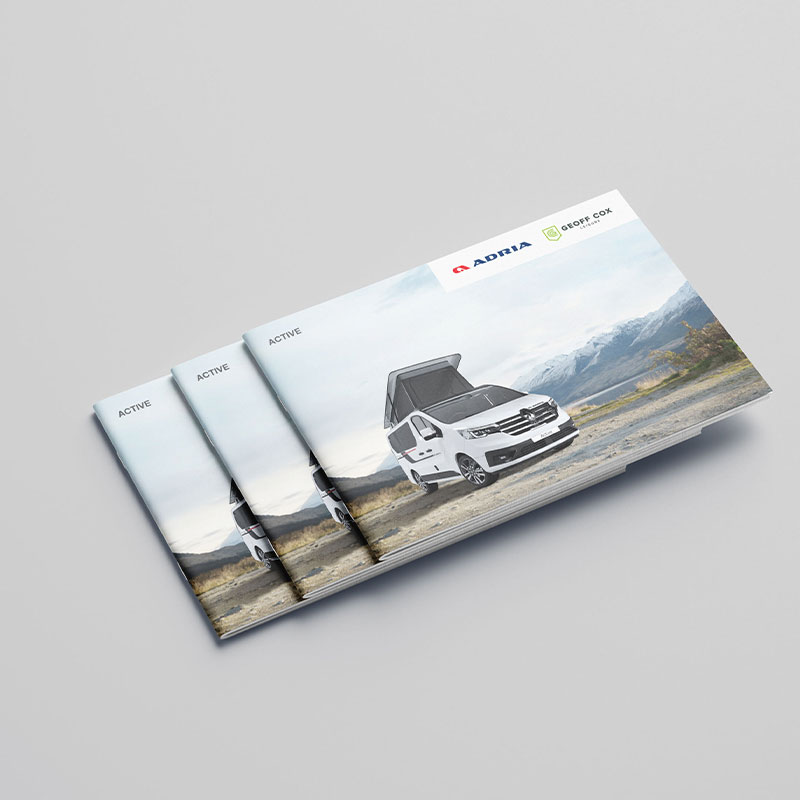What is digital printing?
Digital printing is one of the most popular printing methods due to its flexibility, cost-effectiveness, and speed so a lot of people may think ‘Don’t you just press a button?’
Quite simply, no. It’s a little more complicated that and I’m going to take you through some of the basics when it comes to getting the best out of your order for when we print it digitally.
See frequently asked questions below.

Firstly, before we even get to printing – is your artwork print ready?
Print ready files means it is a file that has been set up perfectly for printing and we do not have to make any tweaks to it. Generally, this will be a PDF file the correct size, with crop marks and at least 2.5mm bleed on all the edges and in the correct colour format.
…But I only have a word document, is that still alright?
Yes we can work from a word document, but we will have to tweak it in order to add bleed and crops. Also we would need any images used within your file sent over separately, as Microsoft programmes down-sample file quality.
What are crop marks and bleed?
Crop marks are what we use for finishing, to trim your file to the correct size.
Bleed is print that goes beyond the edge of where the sheet will be trimmed. It is the part around the edge of a document that gives us a small amount of space to account for movement of the paper, and design inconsistencies.
What do you mean by the ‘correct colour format’?
Like most digital printing machines, our Xerox Versant 3100 runs using a CMYK toner system – Cyan (blue), Magenta (pink), Yellow and K (black), so saving your file in a CMYK format is best.
It is important however to realise that though digital print technology has evolved massively over the years, and new machines with an added extra toner colour are starting to become more available, not all colours will be reached digitally due to the CMYK toner combination.
Also not all colours will print well – Greys are notoriously a printer’s nightmare and that is across the board on all makes and brands of printer (we really do hate it, especially solid blocks of it!!).
What is ‘toner’ and how does that turn into a printed document?
For our machine to run we have to insert a toner cartridge of each of Cyan, Magenta, Yellow and Black. Most toners use petroleum or plant-derived polymers, and it basically looks like coloured powder.
When printing a sheet, the paper is pulled through something called a Fuser. When heated by the printer’s fuser, the particles of toner melt and ‘fuse’ onto the paper media. The printer ‘knows’ where to put the toner particles by forming an electrostatic image on a turning drum. This electrical charge attracts the toner/developer mix from the cartridge onto the ‘right’ areas of the drum. Through various further processes, the toner transfers onto the page. Clusters of dots too small for the human eye create the vast array of colours we see.
What paper size do you print on?
Generally on our digital press, we run orders SRA3 sheets. This is 450mm long by 320mm wide. Running this size allows us to impose and print multiple copies of your artwork on one sheet, reducing cost to you and for us paper and wastage (for example 2 A4 letterheads or 8 A6 postcards with bleed and crops will fit on a SRA3).
But we can run anything from DL envelopes up to 660mm x 330mm sheets – if you have something in particular mind, just get in touch!
What paper stocks can you print on?
We run orders on 70gsm paper all the way up to 400gsm card. To put it in perspective – something printed on a desktop printer at home with a pack of paper brought from a supermarket is usually 100-120gsm. If you’ve been given one of our business cards that’s 350gsm (and laminated to give it a bit of extra finish)
We can print on gloss, silk, uncoated, coloured and recycled stocks, as well as on label sheets and envelopes.
What happens when you send my order to print?
Once we have a print ready PDF file, it is imposed multiple times up on a sheet using our printer software.
The paper stock is then loaded into the printer and set up specifically for your order.
We run a test print to double-check your file against what is on screen, as well as checking for quality, fonts, colour, and making sure the alignment is correct on the sheet (especially important for double sided files where backup is essential).
We want you to have the best finished job possible, so we use CMYK/Pantone colour bridge swatch books as a guide to match to your file’s colours. We also have the flexibility with our printing software to move the print position on the sheet, lighten or darken the file colour tone overall, or add/take away a percentage of C, M, Y &/or K if it is needed.
Once done and all correct, we print your order!





